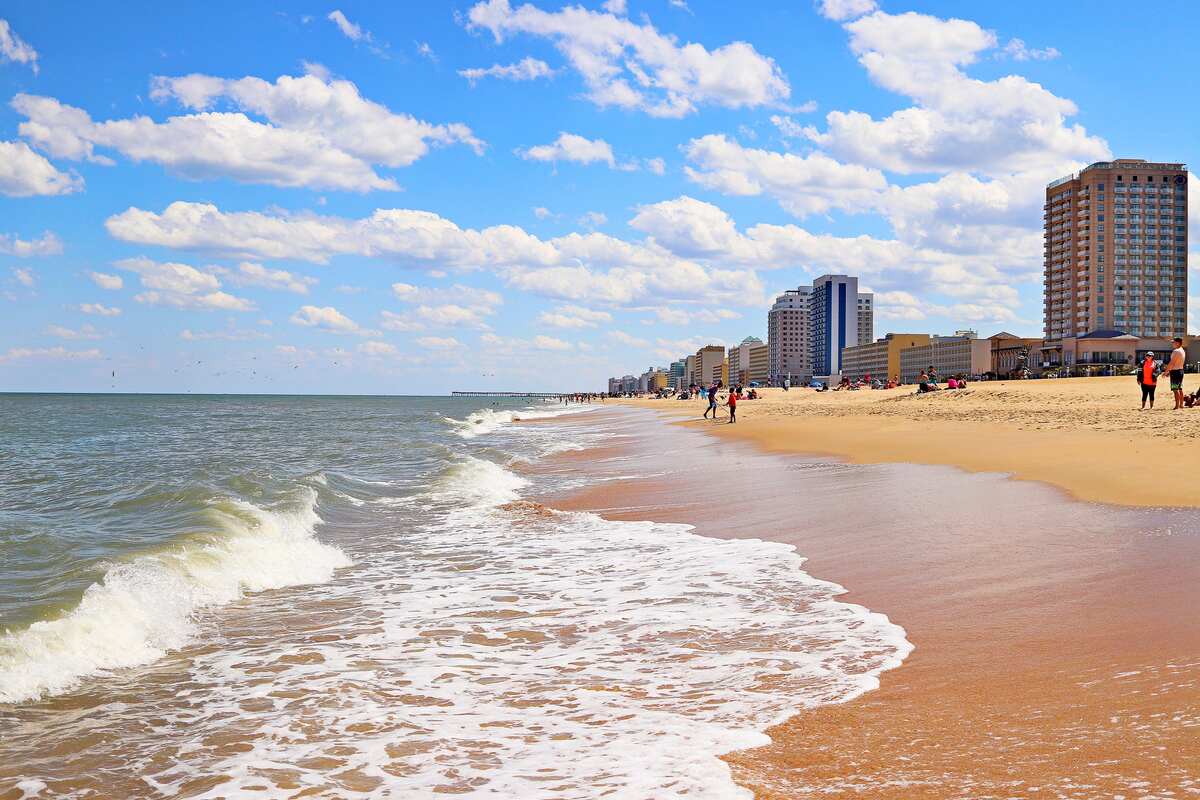
Virginia Beach has a long history as a family resort. In the summer, it’s brimming with adults and children enjoying the ocean and 38 miles of both beach and sand. Sand isn’t fun when it’s in your soil, though, unless you’re one of the four best grass types for sandy soil in Virginia Beach.
You want to grow fruit trees? Sandy soil is great. Grass? Not so much. Sand particles are irregular or rounded and create air pockets in the soil, and the soil can’t store the nutrients that the roots need. In addition, sand does not retain moisture long enough for the roots to absorb it, and it doesn’t provide stability for grass roots either.
Compounding the problem, Virginia Beach lies in the transition zone, where warm-season grasses that flourish in the summer tend to get ugly in the winter when they go dormant. Cool-season grasses that enjoy the winter could get scorched in the summer. So, we need grass types that grow well in the transition zone and in sandy soils.
Bermudagrass
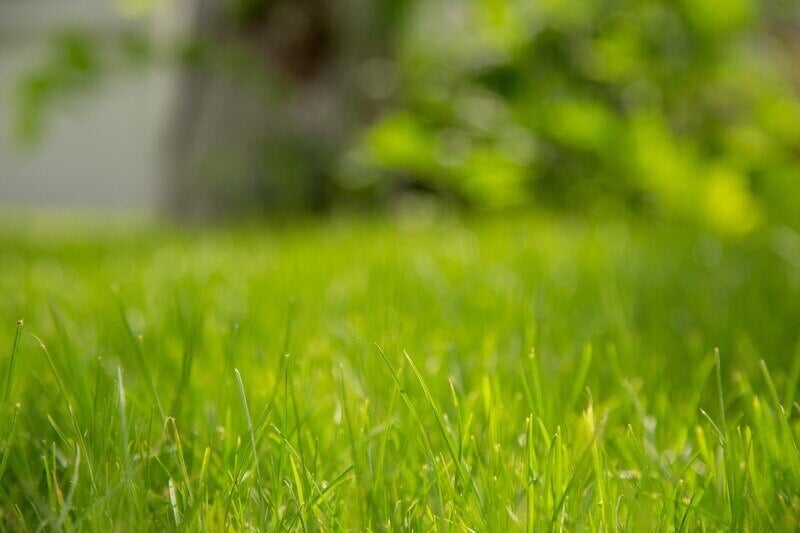
Photo Credit: rovenimages.com / Pexels
Bermudagrass prefers well-drained sites, and sandy soil sure is that. Bermudagrass is an aggressive-growing, dense grass that can survive both periods of low rainfall and flooding. If you have partial shade in your yard, this isn’t the grass for you. Bermudagrass doesn’t do well at all in the shade. It wants to bask in full sunlight as much as possible.
Yukon Bermudagrass was developed from five parental plants chosen for their cold hardiness and high turf quality. It can compete with Zoysia for staying green longer before dormancy. Riviera Bermudagrass is the result of many years of selective breeding for improved turf quality, cold tolerance, and disease resistance.
Both the Yukon and Riviera varieties minimize the risk of winter kill in the transition zone while retaining common Bermuda’s viability in sandy soils.
Facts
- Classification: Warm-season grass
- Spreads by: Stolons and rhizomes
- Shade tolerance: Low
- Drought tolerance: High
- Foot traffic tolerance: High
- Maintenance needs: High
- Recommended mowing height: 1½–2½ inches
- Potential for disease: High, but is tolerant to diseases
Pros and Cons
| Pros | Cons |
| Heat and drought tolerant | Browns during extended droughts |
| Grows quickly | Low tolerance for shade |
| Handles heavy foot traffic | Can be invasive and hard to control |
| Grows fast and spreads quickly | Spreads into flower beds |
Grass Seed Options:
– Pennington Bermudagrass Bare Spot (5 lb. bag)
– Pennington Smart Seed Bermudagrass Mix (8.75-lb. bag)
– Scotts Turf Builder Bermudagrass (10-lb. bag)
– Hancock Seed Co. Bermudagrass (50-lb. bag)
St. Augustinegrass
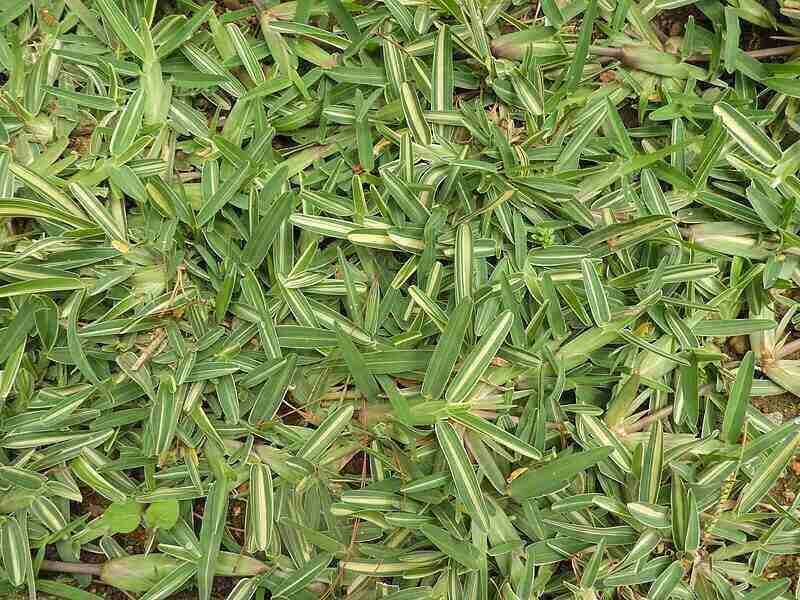
Photo Credit: Yercaud-elango / Wikimedia Commons / CC BY-SA 4.0
St. Augustinegrass is a fast-growing grass great for yards with lots of shady areas. It does well in sandy soil conditions, but it’s the least cold-tolerant of the warm season grasses.
If you want a lawn that can take a heavy amount of foot traffic, St. Augustinegrass is not the right choice. It requires a lot of maintenance as it’s also prone to insects and disease, especially fungi. When purchasing St. Augustinegrass, be warned that it’s not available as a seed; it’s available in sods, sprigs, or plugs.
Facts
- Classification: Warm-season grass
- Spreads by: Stolons
- Shade tolerance: Moderate
- Drought tolerance: Moderate
- Foot traffic tolerance: Moderate
- Maintenance needs: High
- Recommended mowing height: 3½–4 inches
- Potential for disease: High
Pros and Cons
| Pros | Cons |
| Shade tolerant | Can’t tolerate heavy foot traffic |
| Good salt tolerance | Prone to diseases |
| Quick post-winter green up | Sensitive to cold |
| Somewhat drought tolerant | Can’t be cultivated with seed |
Grass Plug Options:
– Seed Ranch St Augustine Seville Grass Plugs (2 Trays)
– Seed Ranch St Augustine Floratam Grass Plugs (2 Trays)
Tall Fescue
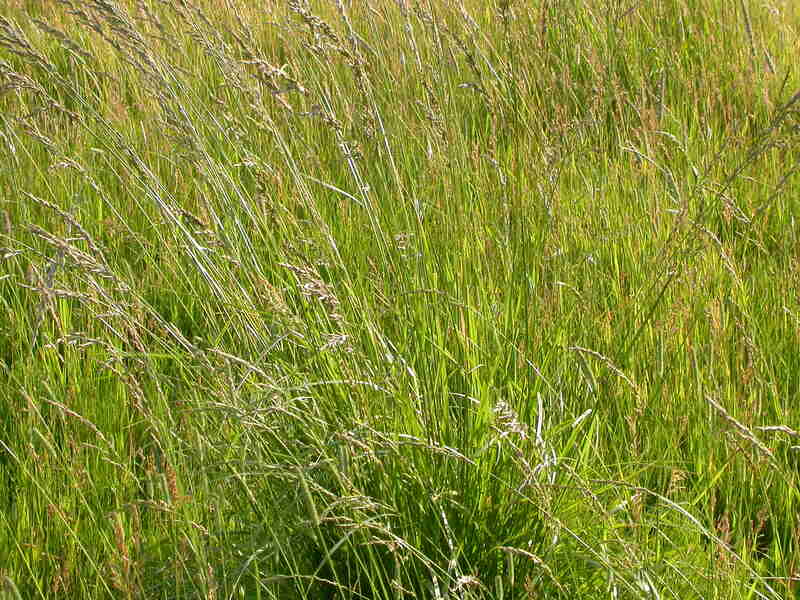
Photo Credit: Matt Lavin / Flickr / CC BY-SA 2.0
Tall fescue is one of the most shade-tolerant of all the cool-season grasses. It also has a deep root system, longer than many other cool-season grasses, making it more resistant to heat and drought. As a cool-season grass, it grows between late summer and early winter, and early spring to early summer. Tall fescue plants grow best in well-draining soils, like sandy soils.
Tall fescue has a tendency to clump due to its bunch-type growth habit and may need to be re-seeded each year in areas that have thinned due to summer stresses. As you would expect from its name, this grass is fast growing, so prepare to mow often.
Facts
- Classification: Cool-season grass
- Spreads by: Bunch-type grass
- Shade tolerance: Moderate
- Drought tolerance: High
- Foot traffic tolerance: Moderate, but low ability to recuperate from wear
- Maintenance needs: Fast growth rate; plan to mow often
- Recommended mowing height: 3 inches
- Potential for Disease: Low to moderate under proper management
Pros and Cons
| Pros | Cons |
| Can mow tall | Can go dormant without supplemental water in summer |
| Good drought resistance | Doesn’t like heavy shade |
| High heat tolerance | Can’t repair bare spots on its own |
| Good wear tolerance | Needs constant mowing |
Grass Seed Options:
– Triple-Play Tall Fescue Grass Seed Blend (5000 sq ft)
– Eretz Kentucky 31 K31 Tall Fescue Grass Seed (choose your size)
– Pennington The Rebels Tall Fescue Grass Seed Mix (7 lb.)
Zoysiagrass
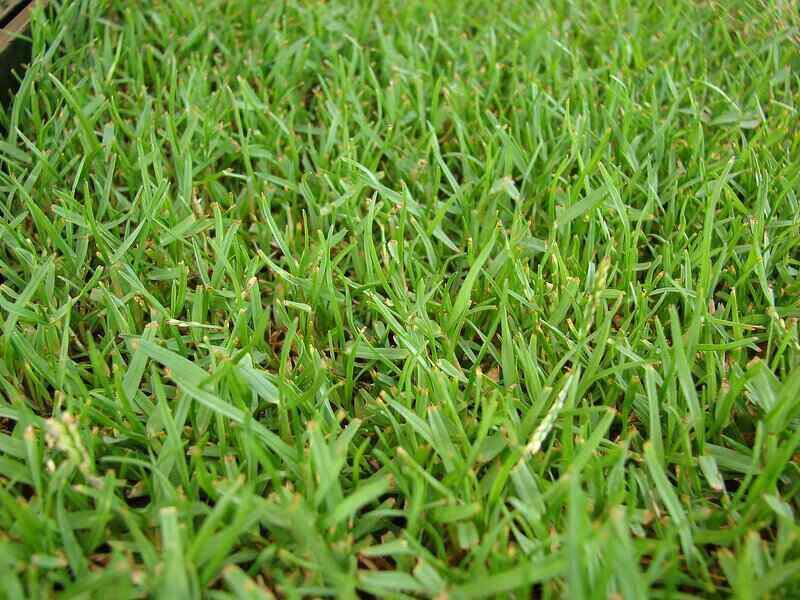
Photo Credit: Forest and Kim Starr / Wikimedia Commons / CC BY 3.0 US
Zoysia’s high salt tolerance (depending on the cultivar) makes it a popular grass to grow in coastal areas. It can be planted in sandy soils, and its extensive root system makes it drought-tolerant.
Zoysiagrass is low-maintenance and doesn’t need to be mowed as frequently as other warm-season grasses. It also does well in partial shade, although it thrives under full sunlight.
Facts
- Classification: Warm-season grass
- Spreads by: Stolons and rhizomes
- Shade tolerance: Low to moderate
- Drought tolerance: High
- Foot traffic tolerance: High
- Maintenance needs: Low
- Recommended mowing height: 1-2 inches
- Potential for Disease: Low
Pros and Cons
| Pros | Cons |
| Low maintenance | May be slow to recover after wear |
| Tolerates cold | Browns in winter |
| Drought tolerant | Dulls mower blades quickly |
| Crowds out most weeds on its own, so less weeding | Spreads slowly |
Grass Plug and Seed Options:
– Zoysia Plugs (50 Large Grass Plugs)
– Zoysia Plugs (50 Full & Lush Grass Plugs)
– Zoysia Plugs (100 Plugs)
– Zoysia Emerald Grass Seeds (1/8 lb. of seeds)
– Zenith Zenith Grass Seeds (1/8 lb. of seeds)
How to Choose the Best Grass Type for your Virginia Beach Yard
Each of the four best grass types has its pros and cons. What grass type to get depends on what your preferences are.
I Want a Yard That’s Easy To Maintain.
Go for tall fescue; it’s used as lawn grass across Virginia and is a good choice for low to moderate maintenance lawns.
I Live by the Coast.
Then you want either turf-type tall fescue, Bermudagrass, or Zoysia, which have a high drought tolerance. St. Augustine is also well suited for coastal areas but is slightly less drought tolerant.
I Plan on Having Many Outdoor Parties and Games in My Yard.
Zoysiagrass and Bermudagrass can handle heavy foot traffic, making them the best choices.
Are There Other Types of Grass That Grow in Virginia Beach?
Of course!
Perennial ryegrass is a versatile grass used for everything from golf courses to plush green carpets outside homes. However, it does struggle with drought and shade, and can incur damage from ice and frost.
Fine fescue is drought-tolerant and recovers quickly after dormancy once the weather starts to cool down. Fine fescue doesn’t tolerate heavy foot traffic, so it might not be right for you if you have a large family or pets.
Kentucky bluegrass is a favorite for residential lawns, athletic fields, and parks due to high traffic tolerance. However, it requires full sun and lots of maintenance, and can produce lots of thatch, which can leave it defenseless to insect and pest infestations.
Bahiagrass performs best in sandy soils because of its extensive root system. This root system makes bahiagrass drought and heat tolerant. However, it can be a very competitive and unsightly weed in a highly maintained turf.
What if I Need More Information?
New types of grass are being developed every year. Your local lawn service provider will know the new cultivars and which is best for your Virginia Beach lawn. Also, check our tips for establishing a new lawn in Virginia Beach.
Calling a Lawn Care Pro
Once you’ve chosen the right grass type for your yard, how will you care for it? If you don’t want to buy a mower, edger, string trimmer, and other tools, or your weekends are already busy enough, find a lawn care pro near you to keep your yard lush, making your neighbors green with envy.
LawnStarter participates in the Amazon Services LLC Associates Program, an affiliate advertising program. LawnStarter earns revenue from products promoted in this article.
Main Image Credit: DanRVA / Wikimedia Commons / CC BY-SA 4.0